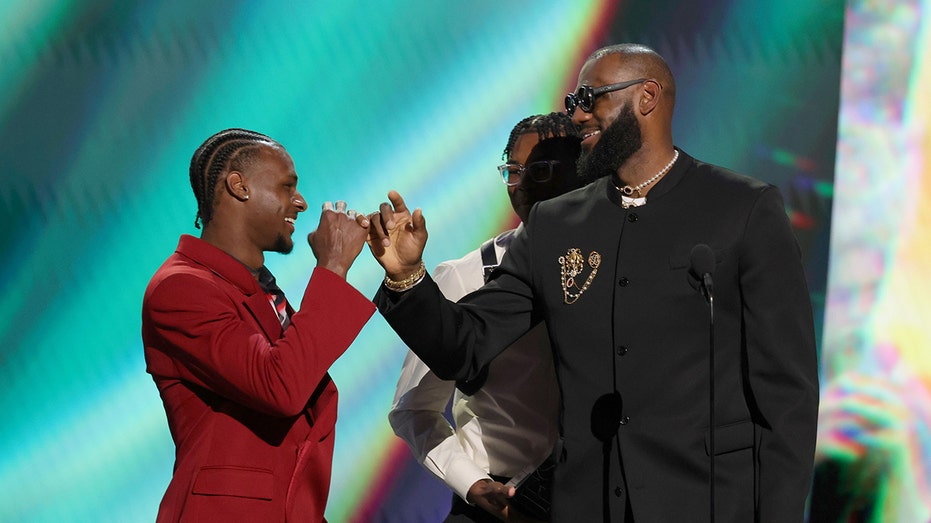America’s total solar eclipse is happening. And, for the first time in many years, it could be coming to a city near you!
On Monday, April 8th, the path of totality will cover many major cities including Dallas, Indianapolis, Buffalo, Rochester and Cleveland. I’m excited because I’ll be traveling to Little Rock, Arkansas to witness this incredibly rare occurrence, and I feel extra lucky because I was in Greenville, South Carolina for the last celestial event in 2017. I remember telling my friends and family that I would be making plans to see the next one. And just like that, here we are.
This time around, the path of totality is much wider than it was in 2017 stretching 122 miles as opposed to 71 miles. Fifteen states will be included from Texas to Maine.
The basic story behind the solar eclipse is simple: The moon as it orbits around the earth passes in front of the sun every now and then.
ULTIMATE GUIDE TO VIEWING SOLAR ECLIPSE ON APRIL 8
When that happens, the sun’s light is temporarily blocked and the result is a solar eclipse. If the sun is completely covered, that is a total eclipse.
Because the moon’s orbit is tilted, this type of event only happens a few times a year, and most times the alignment is not exact, so many eclipses are just partial ones. But the coolest (or in this case hottest) part of this moment (if the weather co-operates) is the ability to witness the sun’s corona (meaning “crown” in Latin) as totality occurs.
As a kid, I remember a total eclipse happening back in 1979 in Canada. Back then, the central shadow of the moon passed through several U.S. states and a few Canadian provinces.
Our teachers planned lessons with diagrams, planetary mobiles and handmade viewing devices created out of shoe boxes. We were all being prepped for the event of the year.
SOLAR ECLIPSE PREPARATION INCLUDES 7 KEY TIPS FOR PROTECTING YOUR EYES FROM THE SUN
The local meteorologist talked about the weather and how that might affect our viewing, and I also vividly remember a television program with a rooster on set to see if he would think it was morning again once the sun peeked out again.
There are stories of birds and insects making noise (or falling silent). And apparently, some types of fish feed in lower light, so that could mean an afternoon trip to the lake. And then there’s the rooster. Will he cock-a-doodle-do once the sun comes back into view?
As for the human reaction to this rare event, I can tell you witnessing total darkness for several minutes in the middle of the day can be life changing. First of all it makes you realize that there are forces much bigger than ourselves out there in the universe, and ultimately we have no control of the power of the earth, sun and moon. I remember seeing tears in many people’s eyes after the eclipse in Greenville as we all experienced something magical together.
FROM ‘END TIMES’ TO ‘KARMIC MULTIPLIER,’ THIS IS HOW RELIGIONS TRADITIONALLY VIEW A SOLAR ECLIPSE
In terms of how long it will be dark depends on where you are. Some places will experience totality for more than four minutes. Others are generally in the one to two range.
Seven years ago in Greenville, South Carolina, I remember it being warm and humid, but once the moon completely blocked the sun, the temperature dropped, and it became a bit breezy. And here’s the toughest part when it comes to watching the eclipse: As forecasters, we’re pretty good at giving you a general idea when there’s a storm on the horizon, but when it comes to figuring out the visibility during the eclipse, it’s hard to nail down the potential clouds that could obstruct your view especially with such a narrow “window” of time. As of this writing, it does appear that there could be some storms in the area stretching from Dallas up into Little Rock, and that could definitely put a damper on viewing (and safety if those storms turn severe and there are millions of people outdoors).
CLICK HERE FOR MORE FOX NEWS OPINION
But if you’re lucky enough to have clear skies, then you are in for a real treat. Just remember to protect your eyes, because that truly is a hazard you need to be cautious of. I still have the “YOU COULD GO BLIND” phrase seared in my memory from when I was eight years old about staring into the sun. You won’t feel the damage being done, but it can happen in just a few seconds.
Also: regular sunglasses will not help. Make sure you have glasses that meet the ISO 12312-2 international standards.
An alternative for safe viewing is through a pinhole projector (like the one I made in school when I was eight). With this method, sunlight streams through the small hole from a cardboard box onto a makeshift screen on a piece of paper on the ground. There are plenty of ideas and instructions on the internet, and I highly recommend Foxweather.com for all your solar eclipse info including the forecast!
And in the meantime, prepare yourselves, earthlings, for a TOTALLY awesome total eclipse. There are ways to see it happening on-line and on TV if you’re not in the path of totality. I plan on taking a moment in Little Rock to appreciate that there really is something so much bigger than ourselves in the universe. As much as we think that we are in control and in charge, perhaps our destiny is right there: written in the stars.





